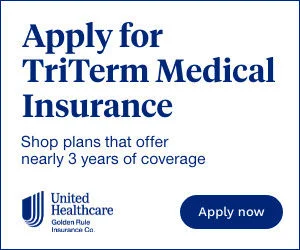Your child’s smile can light up your day. Taking care of their pearly whites (and the rest of their oral health) early enough may keep their smile healthy throughout childhood and into adulthood.
Good oral hygiene, such as daily brushing, flossing and regular dentist visits, can help prevent tooth decay and cavities. Cavities are caused by germs and acid that eat away at the outer surface of your tooth. It creates a hole in the tooth that can be painful if it reaches the nerves inside.
Cavities are the most common chronic disease in children in the United States, according to the Centers for Disease Control and Prevention (CDC). More than half of 6- to 8-year-olds have a cavity in at least 1 baby tooth.
You may think cavities aren’t a big deal in baby teeth, since the teeth are temporary. But cavities in baby teeth can lead to an infection and cause problems with eating, speaking, playing and learning.
Childhood cavities can also cause damage to permanent adult teeth. Your child’s adult teeth are in their gums just behind the baby teeth. So, infections in their baby teeth can affect their adult teeth, says Jessica Pharar, D.M.D. She’s a dentist with Drs. Chin and Pharar Dentistry in Las Vegas and the founder of the Pharar Foundation.
Plus, “caring for and brushing baby teeth sets a good example as to how best to care for adult teeth once they come in,” adds Olga Krikunenko, D.M.D. She’s a dentist and the owner of Mint Dental of Franklin, in Massachusetts.
Here is an age-by-age guide to what you can do to take care of your child’s teeth, from birth to their teenage years and beyond.
Does your health insurance not include dental benefits? A standalone dental plan can be an affordable option. Learn more today.
Age-by-age guide: Newborns
You might not think much about your baby’s oral hygiene before they have teeth to brush. But good oral health starts even before your baby’s teeth come in. At this age, the CDC recommends wiping your baby’s gums with a soft, clean cloth to wipe away sugars and bacteria. Do this at least twice a day: once in the morning after their first feeding, and again at night right before bed.
Age-by-age guide: 3 months to 2 years old
Baby teeth usually start coming in at around 6 months. As soon as baby teeth start coming in, you can start brushing them with a small, soft-bristled toothbrush. The CDC recommends brushing with just plain water at this age. Ask your pediatrician or dentist about whether to use toothpaste and what kind to use.
You may not need to worry about flossing your baby’s teeth yet. Baby teeth typically have enough space between them that they can be cleaned with brushing alone, explains Dr. Pharar. But if your baby does have teeth that are touching, you’ll want to start flossing.
It’s also a good idea to schedule your baby’s first dentist appointment when their first teeth come in (or at least before their first birthday). Besides checking and cleaning those first few teeth, the dentist will check on the overall health and development of your baby’s mouth, says Dr. Pharar. You’ll want to continue taking your child to the dentist every 6 months for routine cleanings and checkups.
Your dentist can also give you guidance on pacifier and bottle use, adds Dr. Krikunenko. “Those can contribute to problems with teeth and jaw if not addressed at an early age.”
Age-by-age guide: 2 years to 6 years old
After age 2, it’s safe to start brushing your baby’s teeth with fluoride toothpaste (if you haven’t been doing so already). Fluoride is a mineral that helps prevent tooth decay.
By age 3, most of your baby’s teeth will have grown in. Now is the time to promote good oral hygiene habits in your child. Get them in the habit of brushing their teeth and flossing them regularly. Before you let them start brushing on their own, make sure they are doing it correctly. Teach them these tricks:
- Use only a pea-sized amount of fluoride toothpaste. Too much can cause dental fluorosis, a condition that causes white spots on the surface of their permanent teeth.
- Don’t swallow while brushing. Swallowing fluoride toothpaste can also cause fluorosis. So, make sure your child spits during and after brushing.
- Brush twice a day for at least 2 minutes. Set a timer or sing “Twinkle, Twinkle, Little Star” to them while they brush. Watch them brush and make sure they’re getting all the areas of their mouth.
You’ll want to supervise your child’s brushing and flossing until they are at least 6 years old. And Dr. Pharar suggests that you help them even longer than that, until they’re about 10. “You don’t necessarily have to be brushing your child’s teeth at that age, but at least watch them, guide them and make sure all the surfaces are getting hit and nothing’s getting missed,” she says.
Now’s the time to build good eating and drinking habits, too. Sugary foods and drinks are a leading cause of cavities in children. Encourage kids to drink water instead of sugary drinks (even 100% juice has sugar that can damage teeth). Tap water is best. Most cities add fluoride to tap water, which can help prevent tooth decay.
Did you know that regular teeth cleanings and X-rays may come at no cost to you with insurance? Explore dental insurance plans now.
Age-by-age guide: 6 years to 13 years old
Your child’s permanent adult teeth start coming in around this time. These are the teeth that they’ll have for the rest of their life, so keeping up those healthy oral hygiene habits is important.
Around age 6, your child’s baby teeth will start falling out to make room for their adult teeth, and their first permanent molars (back teeth) will come in. Molars are the most common spot for cavities. Their grooves can trap germs and plaque that cause tooth decay. Plaque is a sticky film that forms on your teeth between brushings.
Besides brushing regularly, you can help prevent cavities in your child’s molars with dental sealants. A sealant is a thin coating of protective material painted on the chewing surface of molars. They’re completely painless and have been shown to prevent 50% of cavities for up to 4 years.
“By covering the grooves in molars, you are avoiding food and plaque getting lodged deep inside and causing decay,” explains Dr. Krikunenko. “I recommend getting sealants when molars first start to show up in the mouth, which is around 6 years of age.” You’ll want to get sealants again around 12 years when the second set of molars comes in.
Once applied, sealants can last a long time. Your child’s dentist will check on them at each visit and recommend touching up or replacing sealants as needed.
Ready to explore insurance plans where you live?
Is your kid’s dental care covered by insurance?
Dental coverage for adults typically requires a separate (supplemental) dental insurance plan. But your child’s dental care may be covered under your insurance plan. That’s because pediatric dental care is considered an essential health benefit under the Affordable Care Act.
That means that the individual and family plans sold on the Federal Marketplace must cover dental care for kids until they are 19. (Note, your kids can stay on your health plan until they are 26.)
If you get your coverage through an employer or another type of insurance, you may need a separate dental plan for your child. A licensed insurance agent can help you understand your options and find the right plan.
Big bills don’t have to get in the way of your dental health. Here’s how a supplemental dental plan can help keep costs down. Learn more online, or call a licensed insurance agent at 1-844-211-7730 for more information.
For informational purposes only. This information is compiled by UnitedHealthcare and does not diagnose problems or recommend specific treatment. Services and medical technologies referenced herein may not be covered under your plan. Please consult directly with your primary care physician if you need medical advice.
Sources:
Centers for Disease Control and Prevention. “Children’s Oral Health.” April 6, 2022. Retrieved from https://www.cdc.gov/oralhealth/basics/childrens-oral-health/index.html
Centers for Disease Control and Prevention. “Dental Sealant FAQs.” October 30, 2020. Retrieved from https://www.cdc.gov/oralhealth/dental_sealant_program/sealants-FAQ.htm
Dental Clinics of North America. “Added Sugar and Dental Caries in Children: A Scientific Update and Future Steps.” January 2020. Retrieved from https://www.ncbi.nlm.nih.gov/pmc/articles/PMC6242348/
Healthcare.gov. “Essential Health Benefits.” Retrieved from https://www.healthcare.gov/glossary/essential-health-benefits/ Accessed May 24, 2023.
Healthychildren.org. “Baby’s First Tooth: 7 Facts Parents Should Know.” November 19, 2022. Retrieved from https://www.healthychildren.org/English/ages-stages/baby/teething-tooth-care/Pages/Babys-First-Tooth-Facts-Parents-Should-Know.aspx
National Institutes of Health: Office of Dietary Supplements. “Fluoride.” March 22. 2021. Retrieved from https://ods.od.nih.gov/factsheets/Fluoride-Consumer/
Compliance code:
49818-X-0623











